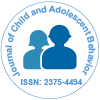The Diagnostic and Statistical Manual of Mental Disorders (DSM-5): Autism Spectrum Disorder
Received: 03-Mar-2025 / Manuscript No. jcalb-25-164613 / Editor assigned: 05-Mar-2025 / PreQC No. jcalb-25-164613(PQ) / Reviewed: 19-Mar-2025 / QC No. jcalb-25-164613 / Revised: 24-Mar-2025 / Manuscript No. jcalb-25-164613(R) / Published Date: 30-Mar-2025 QI No. / jcalb-25-164613
Abstract
The Diagnostic and Statistical Manual of Mental Disorders, Fifth Edition (DSM-5) provides a comprehensive framework for diagnosing Autism Spectrum Disorder (ASD). ASD is a neurodevelopmental condition characterized by persistent deficits in social communication and interaction, along with restricted and repetitive patterns of behavior, interests, or activities. The DSM-5 offers diagnostic criteria, including the severity levels of the disorder, and includes guidance on recognizing the variability of symptoms across individuals. This manual facilitates the standardized identification of ASD, ensuring consistency in clinical practice and research. The criteria are intended to aid in early detection, intervention, and understanding of the spectrum’s diverse presentations.
Keywords
Autism spectrum disorder; Diagnostic criteria; Neurodevelopmental disorder; Social communication deficits; Restricted and repetitive behaviors; Clinical diagnosis
Introduction
Autism Spectrum Disorder (ASD) represents a broad range of neurodevelopmental conditions that manifest in early childhood and are characterized by deficits in social communication, difficulties with interactions, and a tendency toward restricted and repetitive behaviors. The Diagnostic and Statistical Manual of Mental Disorders (DSM-5), published by the American Psychiatric Association, serves as the standard reference for diagnosing mental health conditions, including ASD. In its fifth edition, the DSM-5 has updated the diagnostic criteria for ASD to reflect a more comprehensive understanding of the disorder's heterogeneity and developmental trajectory [1]. Unlike previous editions, the DSM-5 consolidates different subtypes of autism under a single umbrella term, recognizing the spectrum nature of the disorder. This change underscores the varied presentations of ASD, from individuals with significant impairments to those with milder manifestations that may be more difficult to diagnose without careful assessment [2]. The DSM-5 also introduces the concept of severity levels to capture the diversity of functioning among individuals with ASD, emphasizing that support needs may range from minimal to substantial. These updates aim to improve the accuracy of diagnosis and enhance clinical interventions, ensuring that individuals with ASD receive tailored and effective support.
Discussion
The inclusion of Autism Spectrum Disorder (ASD) in the DSM-5 is pivotal in standardizing diagnostic criteria, ensuring consistency across clinical practice and research. Prior to the DSM-5, autism was classified into separate subtypes, including autistic disorder, Asperger’s disorder, and pervasive developmental disorder-not otherwise specified (PDD-NOS). The DSM-5 consolidated these subtypes under a single diagnosis of ASD, reflecting the growing recognition that autism represents a spectrum of presentations rather than distinct disorders [3]. This change has improved the understanding of the disorder's broad and varied nature. The DSM-5 criteria for diagnosing ASD emphasize two core domains: social communication and interaction, and restricted and repetitive behaviors. The introduction of severity levels (Level 1, Level 2, and Level 3) acknowledges that individuals with ASD exhibit a wide range of symptom severity, from those who require minimal support to those needing substantial intervention [4, 5, 6]. This categorization helps clinicians tailor interventions to meet each individual’s specific needs, making treatment more personalized and effective. However, while the DSM-5's diagnostic criteria provide a valuable framework, they are not without limitations [7]. One critique is that diagnosis can still be somewhat subjective and reliant on clinician judgment, which may lead to over- or under-diagnosis. Additionally, the criteria primarily focus on observable behaviors and deficits, potentially overlooking sensory processing issues, executive functioning challenges, and co-occurring mental health conditions [8, 9]. The DSM-5 also emphasizes early diagnosis, as early intervention is crucial for improving outcomes. Nonetheless, some research suggests that the sensitivity of the criteria may sometimes miss individuals with milder or atypical presentations, highlighting the need for ongoing refinement [10]. Advances in biomarkers and diagnostic tools may further enhance accuracy in the future.
Conclusion
The DSM-5 provides a foundational framework for diagnosing and understanding Autism Spectrum Disorder, unifying diverse presentations under a single conceptual umbrella. This approach facilitates more accurate identification and supports tailored interventions based on severity levels. Recognizing ASD as a spectrum allows for a more inclusive understanding, ensuring that individuals with varied needs receive appropriate support. Despite its strengths, the DSM-5's criteria are not perfect; ongoing research and clinical innovation should aim to incorporate sensory processing, cognitive profiles, and objective diagnostic measures to improve accuracy and early detection. As scientific understanding evolves, a more holistic approach—integrating behavioral, cognitive, and biological factors—will better serve individuals with ASD, leading to improved outcomes and quality of life. The DSM-5 remains an essential tool, but continued refinement is necessary to keep pace with advances in neurodevelopmental research.
Acknowledgement
None
Conflict of Interest
None
Citation: Citation: Xin W (2025) The Diagnostic and Statistical Manual of Mental Disorders (DSM-5): Autism Spectrum Disorder. J Child Adolesc Behav 13: 736.
Copyright: © 2025 Xin W. This is an open-access article distributed under the terms of the Creative Commons Attribution License, which permits unrestricted use, distribution, and reproduction in any medium, provided the original author andsource are credited.
Select your language of interest to view the total content in your interested language
Share This Article
Open Access Journals
Article Usage
- Total views: 387
- [From(publication date): 0-0 - Dec 11, 2025]
- Breakdown by view type
- HTML page views: 303
- PDF downloads: 84
